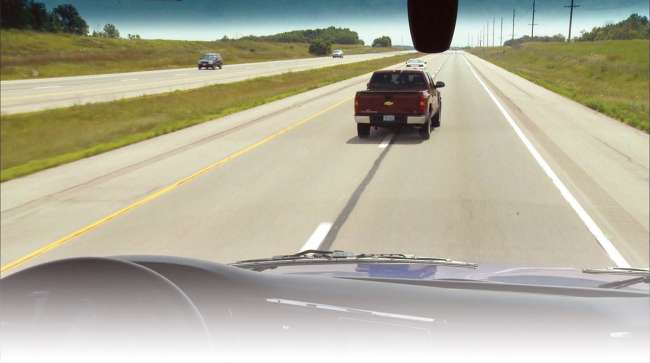Cameras on Windshield Remain FMCSA-Compliant

[Find the latest in equipment & maintenance: Explore this quarter's issue of Calibrate]
Windshield-mounted video cameras will remain compliant with Federal Motor Carrier Safety Administration rules for mounting placement, thanks to an exemption the agency recently made permanent.
FMCSA’s rule change, effective May 6, amends the Federal Motor Carrier Safety Regulations (FMCSRs) to allow certain vehicle safety technology devices to be mounted slightly lower on the interior of commercial motor vehicle windshields than was previously permitted. The rule had required devices to be mounted not more than 4 inches below the upper edge of the area swept by the windshield wipers. FMCSA modified the rule to increase that distance to 8.5 inches. The change makes permanent a temporary exemption the agency granted previously.
In addition, units must be mounted not more than 7 inches above the lower edge of the area swept by the wipers. Devices are still required to remain outside the driver’s sightlines to the road, highway signs and signals. And devices such as antennas or transponders that are mounted at the top of a windshield must be located outside the area swept by the windshield wipers. The amended rule also revises the definition of “vehicle safety technology” to add technologies that had been granted temporary exemptions previously.
More Q3 Calibrate
►Getting It Right: Developing New Oil Standards
►Five Questions: Taki Darakos, Pitt Ohio
►Freeze: Trust the Innovation Process
►TMC Corner: Carriers Challenged to Take Action
►Baxter: Internal Combustion Engine's Demise May Be Greatly Exaggerated
Explore the Issue!
“This ruling marks another important step in the continuation of the commercial vehicle industry’s highway safety efforts,” said Fred Andersky, Bendix director of government and industry affairs. “The amendment will make it easier to implement advanced technologies that use multiple sensors — like Wingman Fusion — without fleets, drivers and truck manufacturers having to worry about violating windshield clearance rules. It updates the regulation in favor of technology — not only for driver assistance systems but also for more automated driving systems that take advantage of additional sensors.”
Andersky noted that the Bendix line of video cameras including Wingman Fusion will remain compliant.
“We must also keep top of mind that drivers are — and will remain — critically important, and maintaining their ability to see the road is essential. The ruling effectively balances the needs of both drivers and the technologies designed to assist them.”
In its decision, FMCSA noted it “believes that the rule has the potential to improve the safety of CMV operations. The agency also finds that CMVs outfitted with vehicle safety technologies under current exemptions do not present an increased safety risk compared to other CMVs.”





